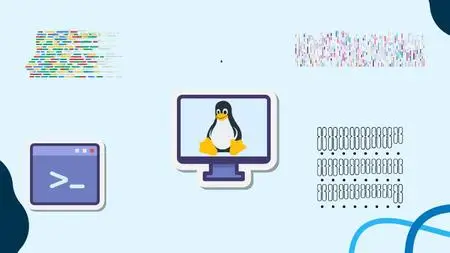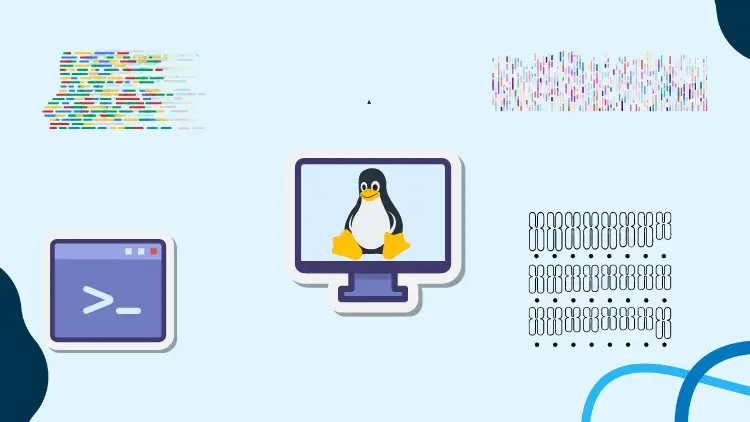Master Bash for Bioinformatics A Beginner Guide to linux A-Z
Last updated 2/2024
Duration: 5h32m | .MP4 1280x720, 30 fps(r) | AAC, 44100 Hz, 2ch | 2.52 GB
Genre: eLearning | Language: English
Last updated 2/2024
Duration: 5h32m | .MP4 1280x720, 30 fps(r) | AAC, 44100 Hz, 2ch | 2.52 GB
Genre: eLearning | Language: English
Mastering Command-Line Tools and Scripts for Computational Biology and Genomics
What you'll learn
The fundamentals of the Linux operating system and its application in bioinformatics.
Basic and advanced Bash commands for efficient file manipulation, directory navigation, and text processing.
How to use NCBI E-utilities on Bash for sequence analysis tasks.
Installation and basic usage of famous bioinformatics tools.
How to use Blast for Linux to perform sequence homology searches and analyze the results.
Sequence alignment analysis techniques.
Phylogenetic analysis, including tree construction.
How to annotate phylogenetic trees using iTOL.
Optional advanced CLI in bioinformatics topics.
Bioinformatics pipeline design and implementation.
NGS data analysis on the Bash command line.
Variant calling analysis on the Bash command line.
Requirements
Basic understanding of biology and genetics concepts.
Familiarity with the principles of bioinformatics is helpful but not required.
Access to a computer running a Linux operating system or Windows with the Windows Subsystem for Linux (WSL) installed.
Description
Welcome to "Master Bash for Bioinformatics: A Beginner Guide to Linux A-Z"! This comprehensive course is designed for individuals interested in leveraging the power of the Linux command line for bioinformatics tasks. Whether you are new to Linux or looking to enhance your skills, this course will provide you with the knowledge and confidence to navigate the Linux environment and perform essential bioinformatics tasks efficiently.
In this course, you will start with an introduction to Linux, learning about its history, basic concepts, and advantages for bioinformatics. You will then dive into the fundamental commands of the Bash shell, including file manipulation, directory navigation, and text processing.
Next, you will explore how to use NCBI E-utilities on Bash for sequence analysis, followed by an overview of famous bioinformatics tools, their installation, and basic usage. You will also learn how to use Blast for Linux to perform sequence homology searches and analyze the results.
The course will then cover sequence alignment analysis and phylogenetic analysis, including tree construction. You will also learn how to annotate the phylogenetic tree using iTOL (Interactive Tree Of Life).
Additionally, you will have the option to explore Command-Line Interface (CLI) in Bioinformatics, which covers advanced topics not compulsory for the main course.
For those using Windows, we will discuss the Windows Subsystem for Linux (WSL) as a Linux alternative and how to set it up for bioinformatics tasks.
Finally, you will learn about bioinformatics pipelines and how to perform NGS data analysis and variant calling analysis on Bash.
By the end of this course, you will have a solid understanding of how to use the Linux command line for bioinformatics, empowering you to efficiently manage and analyze biological data. Whether you are a student, researcher, or professional in the field of bioinformatics, this course will equip you with valuable skills to advance your career.
Join us on this exciting journey to master Bash for bioinformatics and unlock the full potential of Linux in your research and analysis endeavors!
What You'll Learn:
Basics of Linux:
Understand the Linux file system hierarchy
Learn essential commands for navigation and file manipulation
Gain proficiency in using the terminal for everyday tasks
NCBI E-utilities:
Explore the NCBI E-utilities for accessing and retrieving data from biological databases
Learn to query and download sequences, literature, and other data types
Running BLAST on the Command Line:
Perform sequence similarity searches using BLAST
Understand the various options and parameters for customizing BLAST searches
File Management and Scripting:
Master file and directory management in Linux
Write basic scripts for automating repetitive tasks
Bioinformatics Databases:
Explore popular bioinformatics databases like GenBank and UniProt
Learn to query and retrieve data using command-line tools
Real-World Applications in NGS data analysis:
Apply the skills learned to real-world bioinformatics challenges
Gain confidence in using the command line for diverse tasks in computational biology and genomics
Why Enroll in This Course:
Practical Skills for Bioinformatics:
Gain hands-on experience with tools and techniques directly applicable to bioinformatics and computational biology.
Step-by-Step Learning:
Follow a structured curriculum designed to build your skills gradually, ensuring a strong understanding of each topic.
Relevant to Your Career:
Whether you're a student, researcher, or professional, the skills taught in this course are highly sought after in the bioinformatics industry.
Flexible Learning:
Learn at your own pace and from anywhere with our online platform.
Expert Guidance:
Benefit from the expertise of our instructors who have extensive experience in bioinformatics and Linux.
Enroll now and take the first step towards mastering the command line for bioinformatics in the Linux environment!
Who this course is for:
Beginners in bioinformatics who want to learn how to use the Linux command line for bioinformatics tasks.
Students or researchers in the biological sciences looking to enhance their bioinformatics skills.
Professionals in the field of bioinformatics seeking to improve their proficiency in using Linux for data analysis.
More Info



